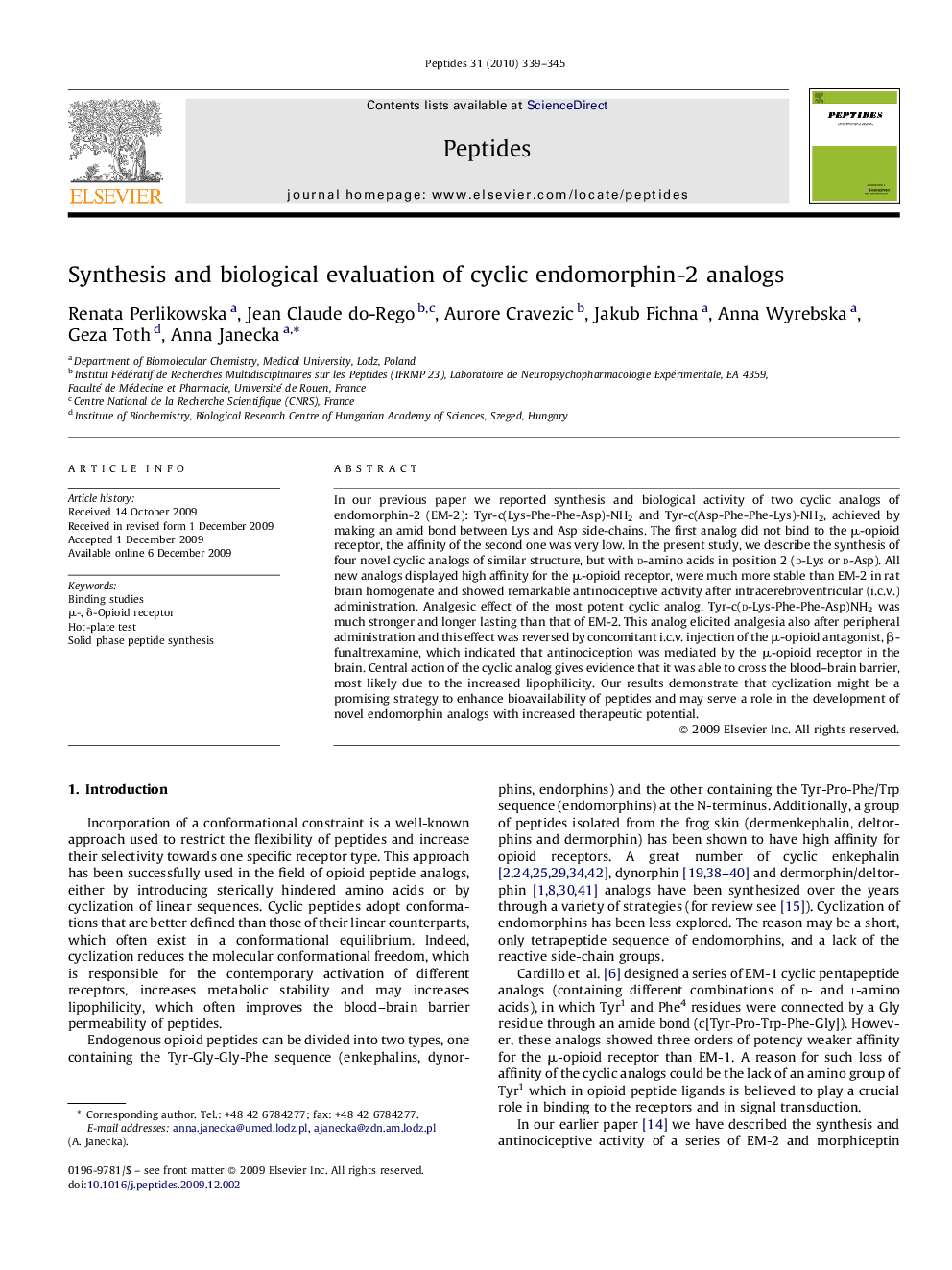| Article ID | Journal | Published Year | Pages | File Type |
|---|---|---|---|---|
| 2006930 | Peptides | 2010 | 7 Pages |
In our previous paper we reported synthesis and biological activity of two cyclic analogs of endomorphin-2 (EM-2): Tyr-c(Lys-Phe-Phe-Asp)-NH2 and Tyr-c(Asp-Phe-Phe-Lys)-NH2, achieved by making an amid bond between Lys and Asp side-chains. The first analog did not bind to the μ-opioid receptor, the affinity of the second one was very low. In the present study, we describe the synthesis of four novel cyclic analogs of similar structure, but with d-amino acids in position 2 (d-Lys or d-Asp). All new analogs displayed high affinity for the μ-opioid receptor, were much more stable than EM-2 in rat brain homogenate and showed remarkable antinociceptive activity after intracerebroventricular (i.c.v.) administration. Analgesic effect of the most potent cyclic analog, Tyr-c(d-Lys-Phe-Phe-Asp)NH2 was much stronger and longer lasting than that of EM-2. This analog elicited analgesia also after peripheral administration and this effect was reversed by concomitant i.c.v. injection of the μ-opioid antagonist, β-funaltrexamine, which indicated that antinociception was mediated by the μ-opioid receptor in the brain. Central action of the cyclic analog gives evidence that it was able to cross the blood–brain barrier, most likely due to the increased lipophilicity. Our results demonstrate that cyclization might be a promising strategy to enhance bioavailability of peptides and may serve a role in the development of novel endomorphin analogs with increased therapeutic potential.
